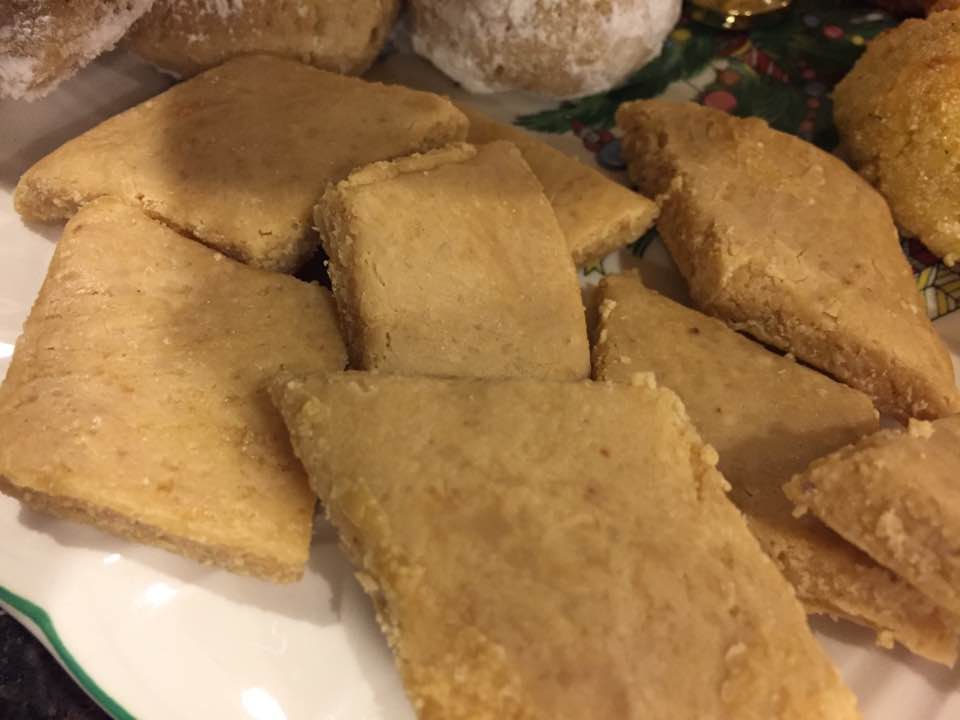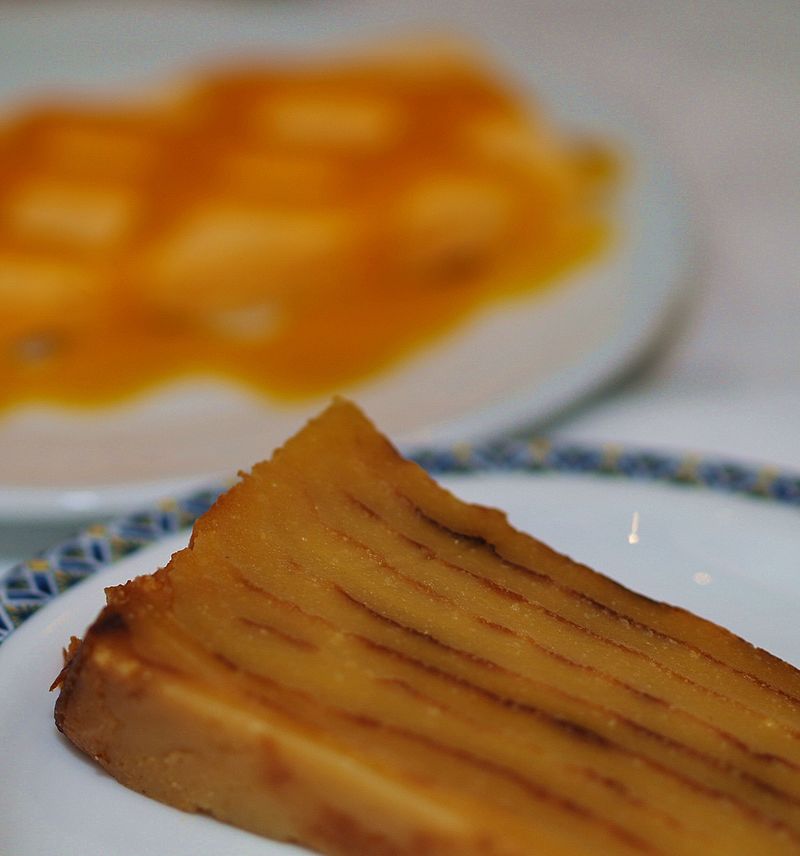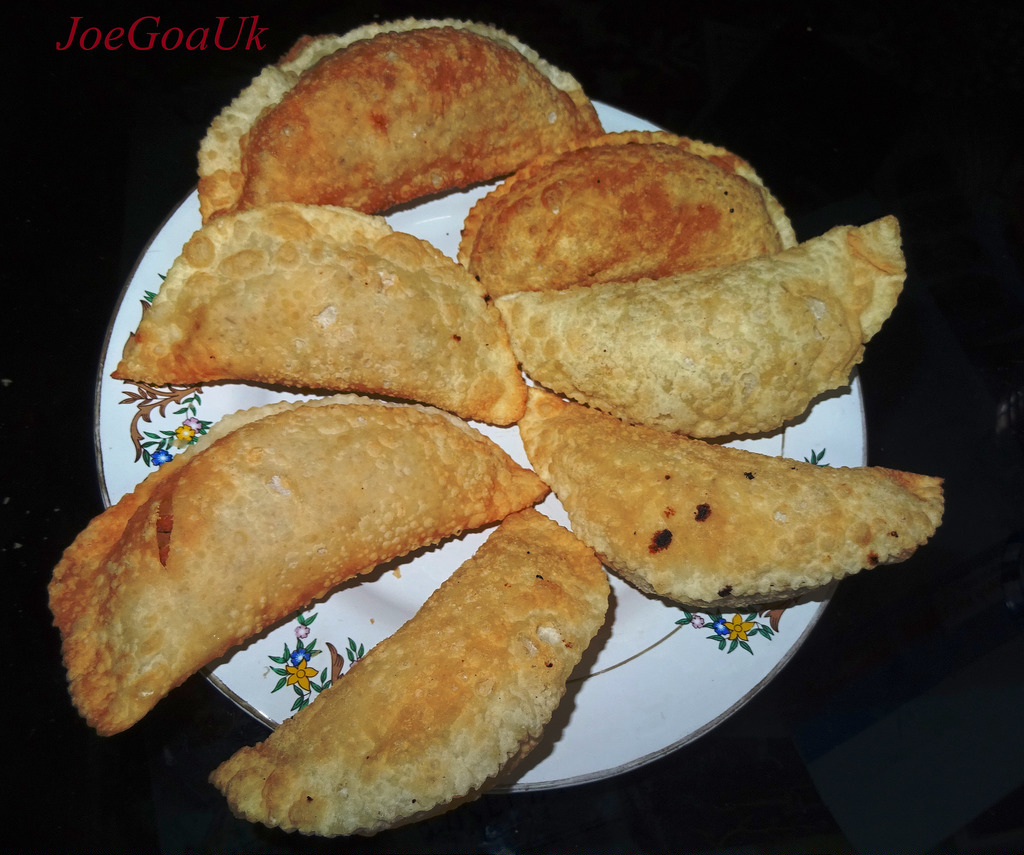By Reena Martins
Dedicated to the memory of Dr. Jose Colaco.
As a boy in the Forties, John Menezes came home from Christmas midnight mass at St Xavier’s Church in Poona, to an array of sweets. But what really stands out for John, is his Karachi granny’s milk punch. “The recipe, a British one, was eventually stolen, but I remember she’d let a concoction of rum, brandy, milk, lime and sugar stand for three weeks, strain and can it in a way that allowed air to escape. The curd in the residue then went into the tartlet crusts.”
The well-heeled Menezes family (their bungalow on the leafy Wellesley Road was rented from the father of industrialist, Azim Premji) was one of the few Goans at the time to own an oven. It was a British made Belling which baked the Christmas fruitcake and New Year’s bebinca. But cakes were hardly regular fare in traditional Goan homes in the Sixties and Seventies. The few households that did bake, took their batters to neighbourhood bakeries.
Our family's batega pronounced in Goa as batk (coconut cake) and the little ribbon cake were baked in the blazing ovens of Persian Bakery in Poona’s Kolsa Galli, the blacksmith’s hub. But while the coconut in the batega on the aluminium platter survived the savage heat and the cake came out a beautiful golden brown, the ribbon cake bore deep scars. I’d watch in awe as my mother gently mixed the buttery yellow cake batter, swirling with pink and green in an enamel bowl — mum loved the starkness — but could never figure out how the batter that had nearly melted off my fingers, had turned bone dry when baked.
A generous pot of sorpatel is cooked in advance and eaten throughout the Christmas week. Photo courtesy Melina Pereira.
A few homes, like that of Atlanta-based, Marissa Sequeira, in Shirley Rajan village in Bandra, had a local contraption called the round oven, with sand in the centre. But in the Sixties, Marissa’s maternal granny, Milagrinha D’Souza would walk in the biting cold with a stuffed piglet on a platter, from their home on 151, Hill Road (opposite New Talkies) to the bakery on Bandra’s Bazar Road. “It had to be baked very early or the bakery could lose its vegetarian customers,” says Marissa. At lunch, the carved suckling was served with sorpotel and vindalho, slow cooked on the coal stove.
It is a Goan tradition to plate Christmas sweets on Christmas Day and send them as gifts to neighbours. This is called the festa kuswad. Photo courtesy JoeGoaUK
Well thumbed recipe books were dug out for the Christmas meal. For Ezilda Fernandes, a wedding dressmaker in Dhobitalao, it was Pedro Damio Dias’s The Goan Cook's Guide published c.1937, bought from BX Furtado’s next door, that was the old faithful. My mother, on the other hand, went by pure instinct, when it came to her finger-licking sorpotel. But it was the boiled meat that we’d lust after, pinching it off the chopping board before it was sautéed with the dark and mysterious vinegary masala. Others like Eulogio Barretto in Byculla ate it religiously — from Christmas eve right through the season. “My parents welcomed anyone in need of a meal,” says his daughter, Walesa.
When it came to traditional sweets, it always began with a cross at our home. Not the old rugged wooden cross but one still destined for the fire. Mum would pinch a tiny piece off the smooth hunk of dough and pull it roughly into shape with her expert hands. Once the dark glistening wok, up to its eyeballs with oil, was hot enough, mum, perched on the tiny wooden stool near the door of our little home in Poona, would quietly slip in the cross.
A beautifully laid out Goan dinner table typical of Christmas Day. Photo courtesy Syzelle Pereira e Antao. Do not reproduce without permission.
The tiny bronzy Pumix stove — quite a gun throat — was pulled off the shelf and from under its shroud to make the Christmas sweets. It was still the Seventies, and you had to wait a fortnight to get the gas cylinder you’d booked at the Hindustan Petroleum office. So kerosene from the ration shop always came to the rescue. After dinner, our neighbours, Domacian uncle and his demure wife, Anna, would squat with us on the cane mat and roll out neureos, slide cormollans off the back of a fork and pinch kulkuls into dainty parcels.
Texas-based Cynthia Gomes James remembers her younger neighbours in Mazagon, shaping dough balls to make neureos. While the older ones rolled out the pastry, the 'experts' filled and sealed the neureos (pastry stuffed filled with sweetened coconut). The lady of the house then skilfully deep fried them. Cynthia says, "The sweets were put away in large tins and not touched till Christmas day."
Crawford Market in Bombay. Goans would have done a lot of their Christmas shopping here. Photo courtesy wikipedia commons.
Not far off, at Khilchi Terrace, one of Grant Road’s Dias Buildings, where afternoons are still redolent with the aroma of mawa cakes wafting in from the kitchen of the iconic B Merwan’s, neighbours were family. The four families on the fourth floor — one Mangalorean and three Goan, all thick as thieves — would huddle together after dinner, in the open-to-sky verandah. “If we made kulkuls for aunty Carmen today, it was aunty Maria’s turn tomorrow. It was so much fun and even the Muslim children from upstairs would join us,” says my aunt, Villa D’Souza, a grandmother of four, who spent nearly five happy decades raising a family in their Grant Road home.
It was a time of camaraderie. Nicknames drew hardly any offence. Our painter at Christmastime was “dammit” and till date none of us know his real name. “If daddy had to point out a flaw in the shade of paint, he’d go, ‘Dammit!’ and so the name stuck,” my sister, Velma, tells me. Khoddo (baldy) was our Goan tailor who’d come over to stitch our Christmas clothes — pencil tucked behind the ear — and amuse us with terms like chicken and mutton sleeves. Ditto with kaan kathro (no ears), who was Marissa’s family tailor. Marissa says, “He’d smoke hand-rolled beedies from the leaves of a tree in our village, so we’d collect them for him.” But the tree that stole the show was the live ‘Christmas tree’ which was carried up from the garden to their first-floor house. It was decorated with pretty ornaments from England, brought by relatives from her mother, Mary’s side. Mary D’Souza is India’s first female Olympian.
A Goan Christmas Star. It is a Goan tradition to hang paper stars outside homes. These can be quite elaborate works of art and lend an ethereal luminosity to the village night sky at Christmastime. Photo courtesy JoaGoaUK.
While Bandra’s erstwhile fishing villages were dressed to the nines, the hoi polloi in the Goan neighbourhoods in Byculla, Mazagon, Grant and Dhobitalao had their own stars to hang outside. Almost every building with a sizeable Catholic population produced a large star made from reeds and fine tissue paper. The anticipation over them would even rival Sandra’s eagerly awaited halter dress or Marina’s patent leather shoes. Cynthia Gomes says, "The group responsible for making them would have their name, like 'Naka Boys' or 'Durango Kids', displayed on the star or on a banner."
Back home from midnight Mass, the white butter paper and bamboo star was immediately turned on as we’d rush into the waiting warmth of home. When the lights were put out, the deep-red crib light, just above the cosy manger and the fairy lights on the crib’s roof stayed on. The silver, gold, red and green buntings stuck from wall to wall, glowed in the dark.
Early next morning, a two-man band playing off-key tunes on trumpets would wake us up. But till then, it was a very silent night.
Reena Martins is a journalist having worked for major newspapers in India, and the editor of the hugely successful book Bomoicar, Stories of Bombay Goans, 1930-1980. You can purchase the book here or write to reena.martins@gmail.com for direct purchases.









